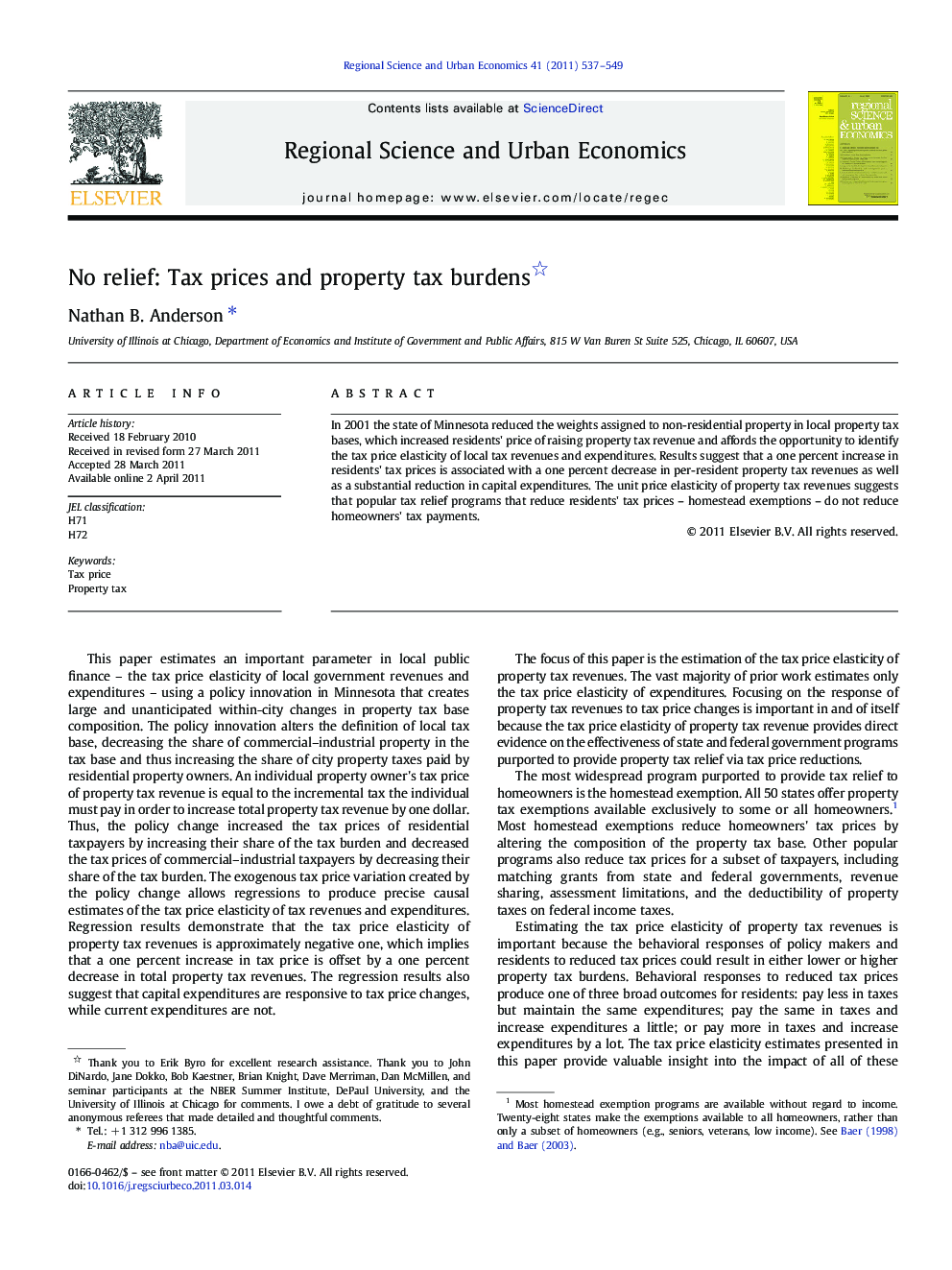| Article ID | Journal | Published Year | Pages | File Type |
|---|---|---|---|---|
| 981264 | Regional Science and Urban Economics | 2011 | 13 Pages |
Abstract
In 2001 the state of Minnesota reduced the weights assigned to non-residential property in local property tax bases, which increased residents' price of raising property tax revenue and affords the opportunity to identify the tax price elasticity of local tax revenues and expenditures. Results suggest that a one percent increase in residents' tax prices is associated with a one percent decrease in per-resident property tax revenues as well as a substantial reduction in capital expenditures. The unit price elasticity of property tax revenues suggests that popular tax relief programs that reduce residents' tax prices – homestead exemptions – do not reduce homeowners' tax payments.
Keywords
Related Topics
Social Sciences and Humanities
Economics, Econometrics and Finance
Economics and Econometrics
Authors
Nathan B. Anderson,
